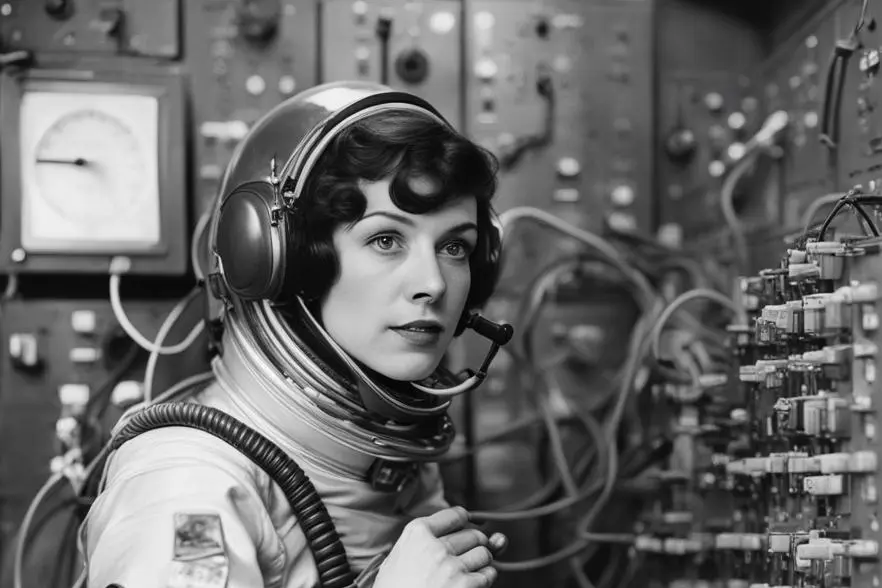Ah, the Deep Space Network (DSN), NASA’s unsung hero and the cosmic switchboard operator that never sleeps. Imagine a 24/7 call center, but instead of dealing with customer complaints or tech support, it’s facilitating groundbreaking scientific discoveries and space exploration. The DSN is the network that says, “Hold my beer,” while juggling communications with over 40 space missions, including the Artemis mission and its CubeSats. But lately, it seems the DSN is biting off more than it can chew, and the consequences are far-reaching.
What is the DSN?
The Deep Space Network is essentially NASA’s long-distance call center for space. It’s the communication link between Earth and spacecraft that are exploring the far reaches of our solar system and beyond. Each of the three stations on the DSN has a 70-meter (230-foot) dish antenna, the largest antenna in the world for deep space communications. Each location also has at least three 112-foot (34-meter) antennas. These antennas are the backbone of the DSN, allowing it to handle multiple missions simultaneously. They are strategically located around the globe—in California, Spain, and Australia—to ensure continuous communication with spacecraft as Earth rotates.
A Brief History of the DSN
The DSN has been around for quite some time, with its oldest large antennas in California entering service in 1966. These antennas were then enlarged to their current 70-meter diameter in 1988. Over the years, the DSN has been the lifeline for various missions, from the Apollo moon landings to the Mars rovers, and even the Voyager spacecraft that have left the solar system. It’s the network that said “hello” to Neil Armstrong on the Moon and “goodbye” to Voyager as it left the solar system. It’s been a constant in an ever-changing landscape of space exploration.
The DSN’s Current Predicament
According to recent press reports, the DSN is in hot water. Suzanne Dodd, NASA’s Jet Propulsion Laboratory boss, mentioned** that the network is “nearly doubling the load on the DSN” with another 40 missions expected to be added in the next ten years. The network is oversubscribed, and demand sometimes exceeds supply by as much as 40 percent. This has already impacted missions’ ability to fully meet objectives and achieve a full return on investment.
** NASA ADVISORY COUNCIL Science Committee Meeting Agenda, August 29-30, 2023.
The Artemis Effect
The Artemis missions are particularly taxing on the DSN. These missions will come with unique requirements because humans are involved. Instead of bits of data, there will be gigabits of data. Scientists want 8K video coming back rather than 1080p. This has led to a situation where important operating time for other missions like the James Webb Space Telescope (JWST) and the Mars Reconnaissance Orbiter had to be deducted, much to the detriment of these missions. The JWST, for example, is designed to look back over 13.5 billion years to see the first stars and galaxies forming out of the darkness of the early universe. Losing DSN time means potentially missing out on groundbreaking discoveries.
What Needs to Happen?
More Hardware, Please!
The DSN is like that old computer you have that still runs Windows 95; it’s functional but not up to the task of modern demands. NASA needs to invest in upgrading the hardware to handle the increasing data loads. This could mean adding more antennas or upgrading the existing ones to handle higher data rates.
Prioritization and Scheduling
As crewed Artemis missions come online, they will naturally receive priority over uncrewed missions. This means NASA needs a robust scheduling system to ensure that all missions get the DSN time they require, without sacrificing the integrity of ongoing scientific missions. A dynamic, real-time scheduling algorithm could be the answer.
Public and Private Partnerships
Given the commercial involvement in many of Artemis’ precursor missions, it might be time for NASA to consider public and private partnerships to share the load and the cost. Collaboration with commercial space companies could open up new avenues for resource sharing and technological innovation.
Conclusion
The Deep Space Network is like that overworked barista during the morning coffee rush—essential but stretched thin. As we look to explore deeper into space, it’s crucial that we don’t forget about the hardworking DSN back on Earth. After all, what’s the point of going to the Moon, Mars, or beyond if we can’t phone home to brag about it?
So, NASA, let’s give the DSN the love and upgrades it deserves. It’s high time this cosmic switchboard operator got a break, and that we ensure the continued success of all missions, not just the new and shiny ones. After all, space is a big place, and there’s enough room for everyone—if we plan it right.

